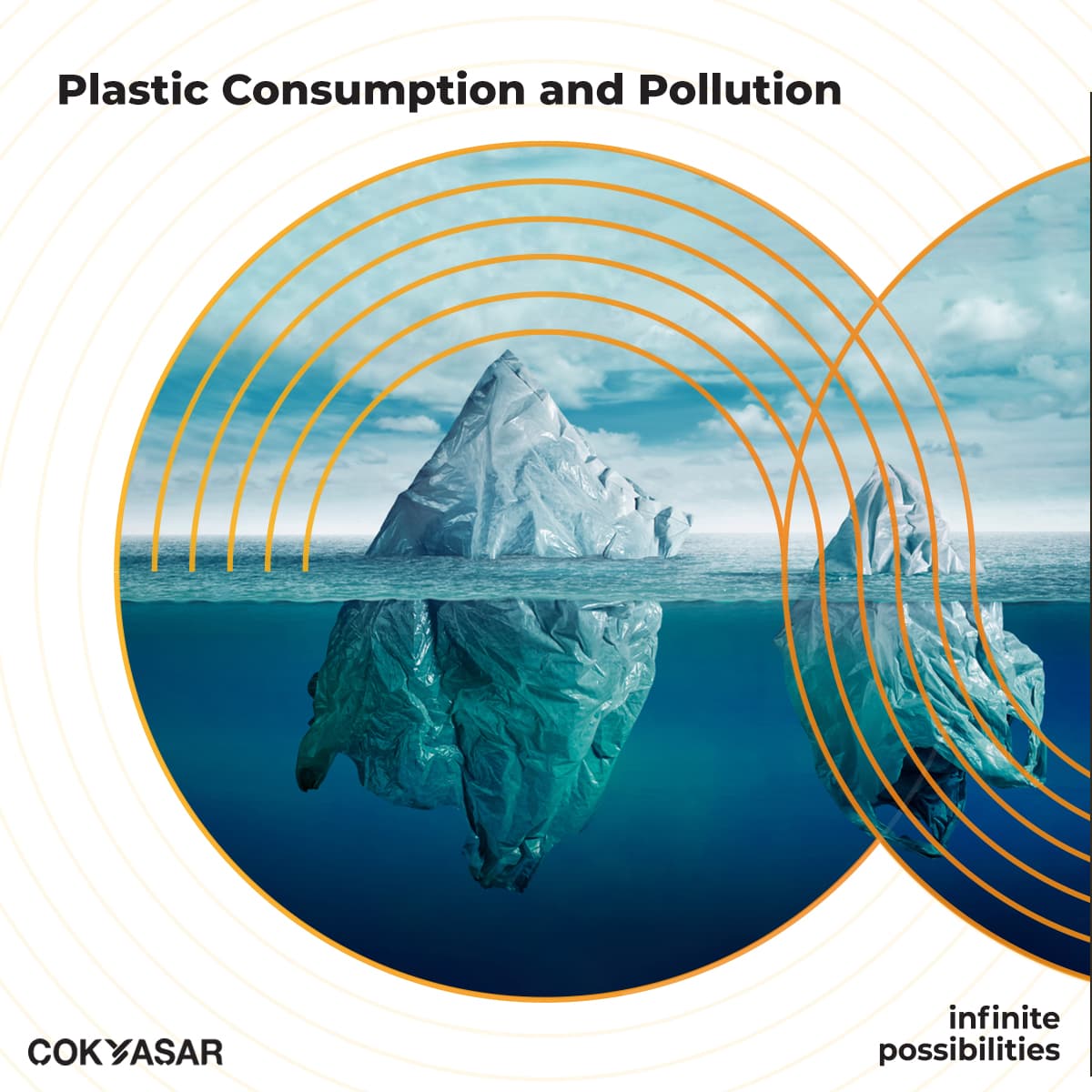‘The Journey of Plastic: The Facts About Plastic Waste’
Plastics have become an indispensable part of our lives. There are plastics in drinking water, food, coffee cups, packaging and many materials we use in daily life. The uncontrolled use and disposal of these plastics poses a great threat to both the environment and human health.
The negative effects of plastics on our planet and human health are now a known fact. However, research on plastics shows that the situation is worse than we imagine. Research suggests that if plastic pollution continues at this rate, there will be more microplastics than fish in the seas in 2050.
The "Global Plastic Outlook" report published by the Organisation for Economic Cooperation and Development (OECD) states that only 9 percent of the existing plastic waste worldwide can be recycled. Global plastic production, which was only 1.5 million metric tonnes in 1950, increased to 367 million metric tonnes by 2022. This means that 45 kilograms of plastic is produced per person per year in a world with a population of 8 billion.
The Plastic Reality Surrounding the World
Plastics are preferred because they are cheap, fast and easily accessible. However, using and throwing away these plastics creates a big problem for both the environment and human health. Plastics remain in nature for centuries and are very difficult to recycle; in short, plastic pollution threatens our planet and living things.
The plastics industry showed a great development with the second world war. In the war, materials such as parachutes, canteens and clothes for soldiers were produced from plastic. Another reason for the widespread use of plastics is that they are disposable. We think that we get rid of plastics by throwing them away after use, but plastic waste does not disappear in nature.
It takes centuries for plastics to dissolve in nature. Only a very small portion of plastic waste can be recycled, and even in developed countries, this rate does not exceed 10 per cent. Fifteen per cent of plastics are recyclable, but they need to be separated at source and clean. Plastics cannot be recycled repeatedly like metal or glass. After being recycled several times, it becomes a useless waste.
Plastics do not disappear in nature, they shrink. A 10-centimetre plastic waste can turn into 30 thousand microplastics. These microplastics are transported to the ocean from rivers and beaches. Every year, 8 million tonnes of plastic waste reaches the ocean and there are 12 million tonnes of plastic in the oceans. Plastic waste also causes the death of sea creatures and birds.
Microplastics entering the ocean accumulate on the ocean floor and enter the food chain, these microplastics are swallowed by fish, when we eat these fish or drink ocean water, we also take microplastics into our bodies.
Where is the World in Plastic Waste Management?
Plastic wastes are divided into two as recyclable and non-recyclable. Recyclable plastics are processed by developed countries within the country and re-entered into the consumption chain. Plastics that cannot be recycled or unprofitable are sent to other countries.
Countries importing plastic waste include populous and developing countries such as India, China and Indonesia. Until 2017, China was the world's largest importer of plastic waste and received over one million tonnes of plastic waste from EU countries every year. However, China, Indonesia and India rank first in plastic pollution. For this reason, China banned the import of dirty and mixed waste in 2018 because of serious environmental pollution problems.
One of the countries importing plastic waste is Turkey. Turkey receives 15.4 per cent of the dirty and mixed plastic waste exported by EU countries. According to BBC News, more than 160 thousand tonnes of plastic waste was sent from the UK to Turkey for recycling last year. According to Greenpeace Turkey's data, approximately 520 thousand tonnes of waste was imported in 2021.
